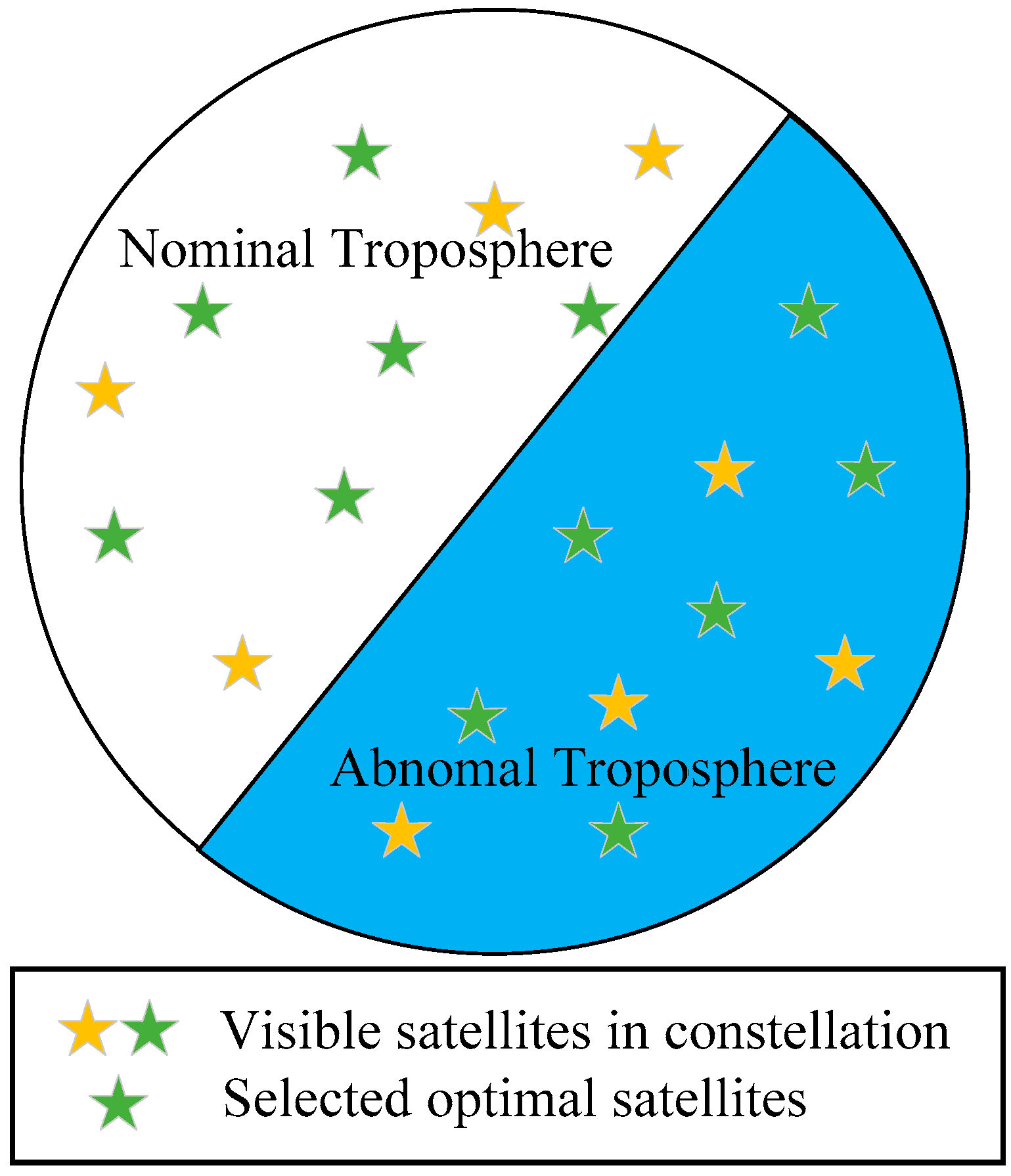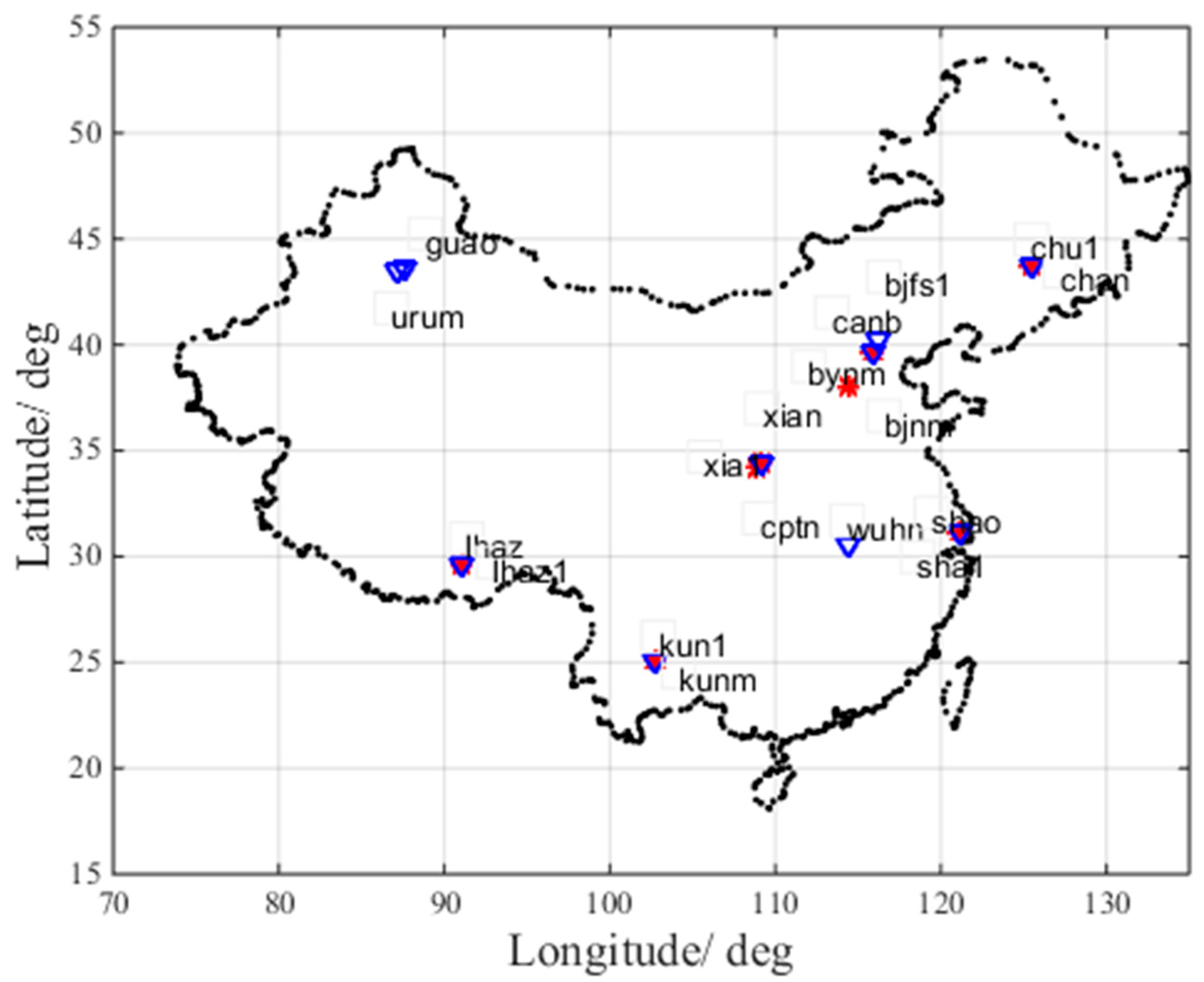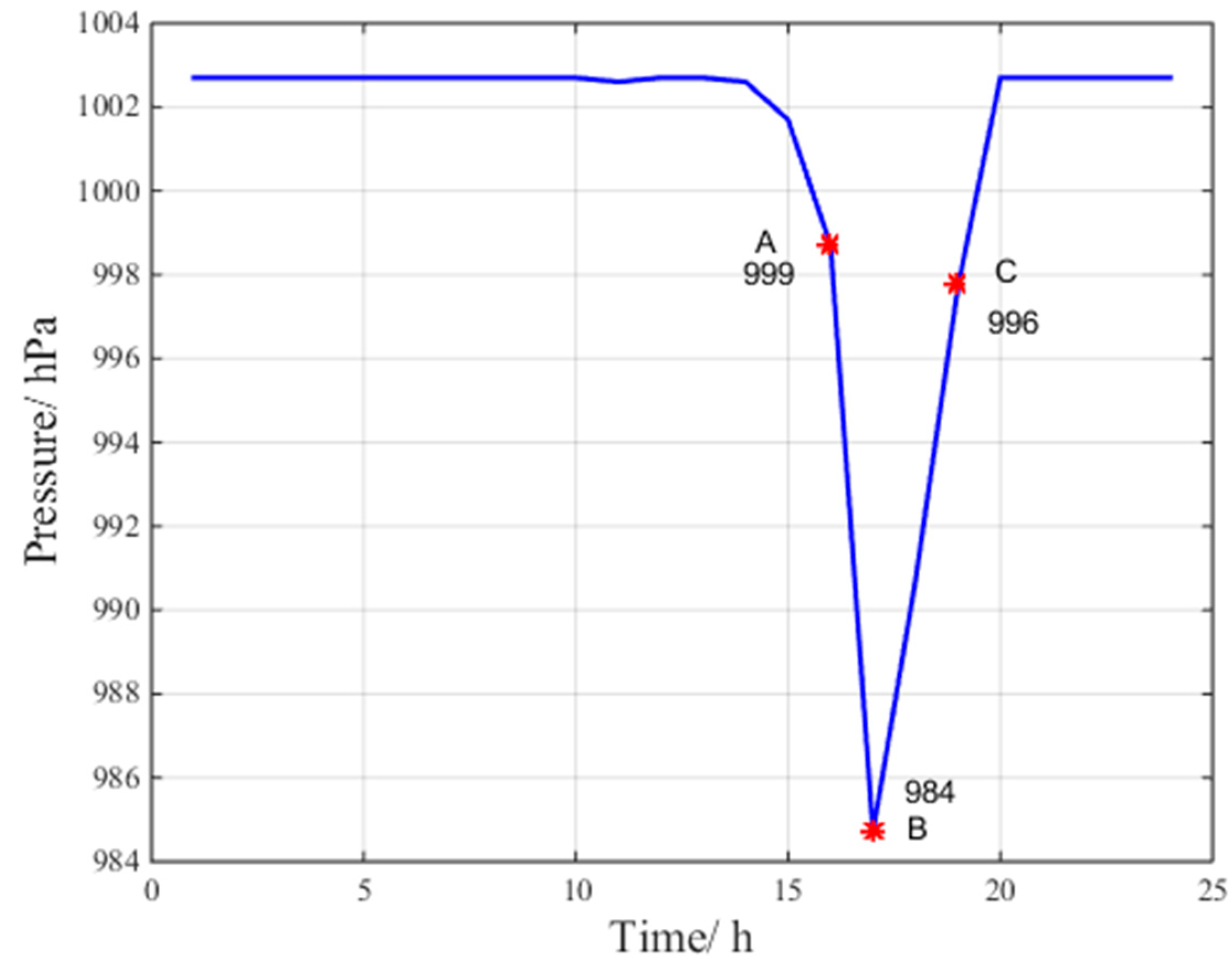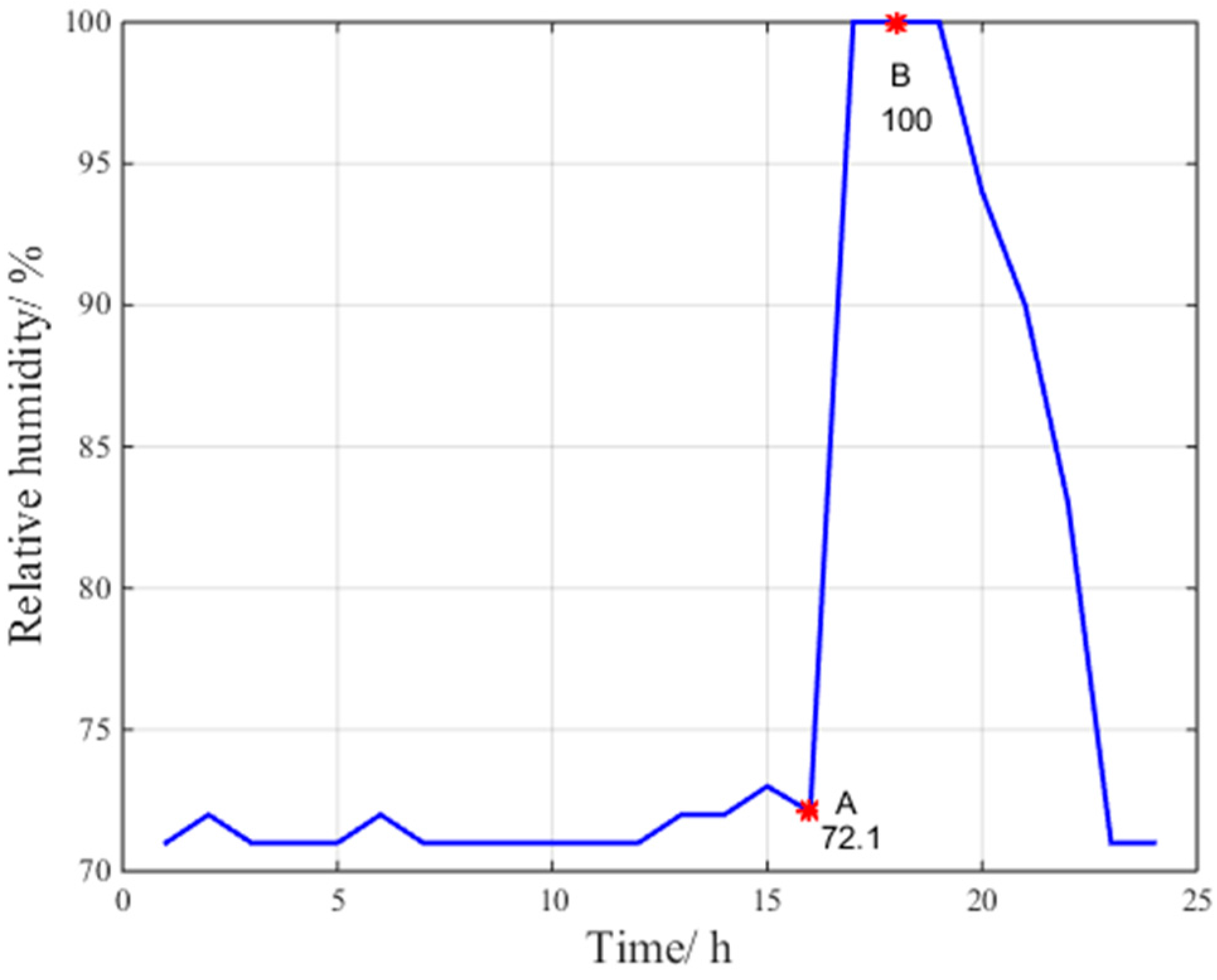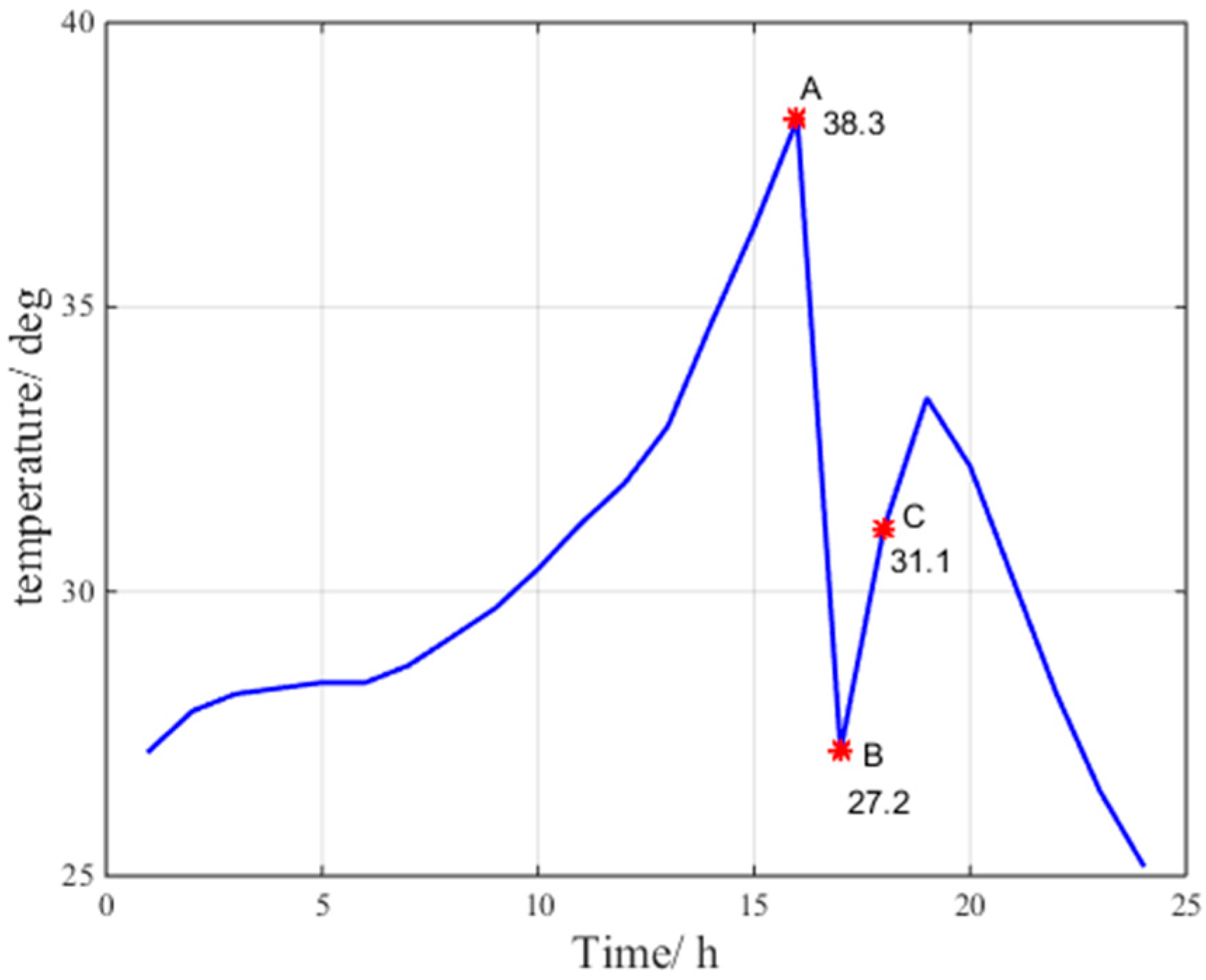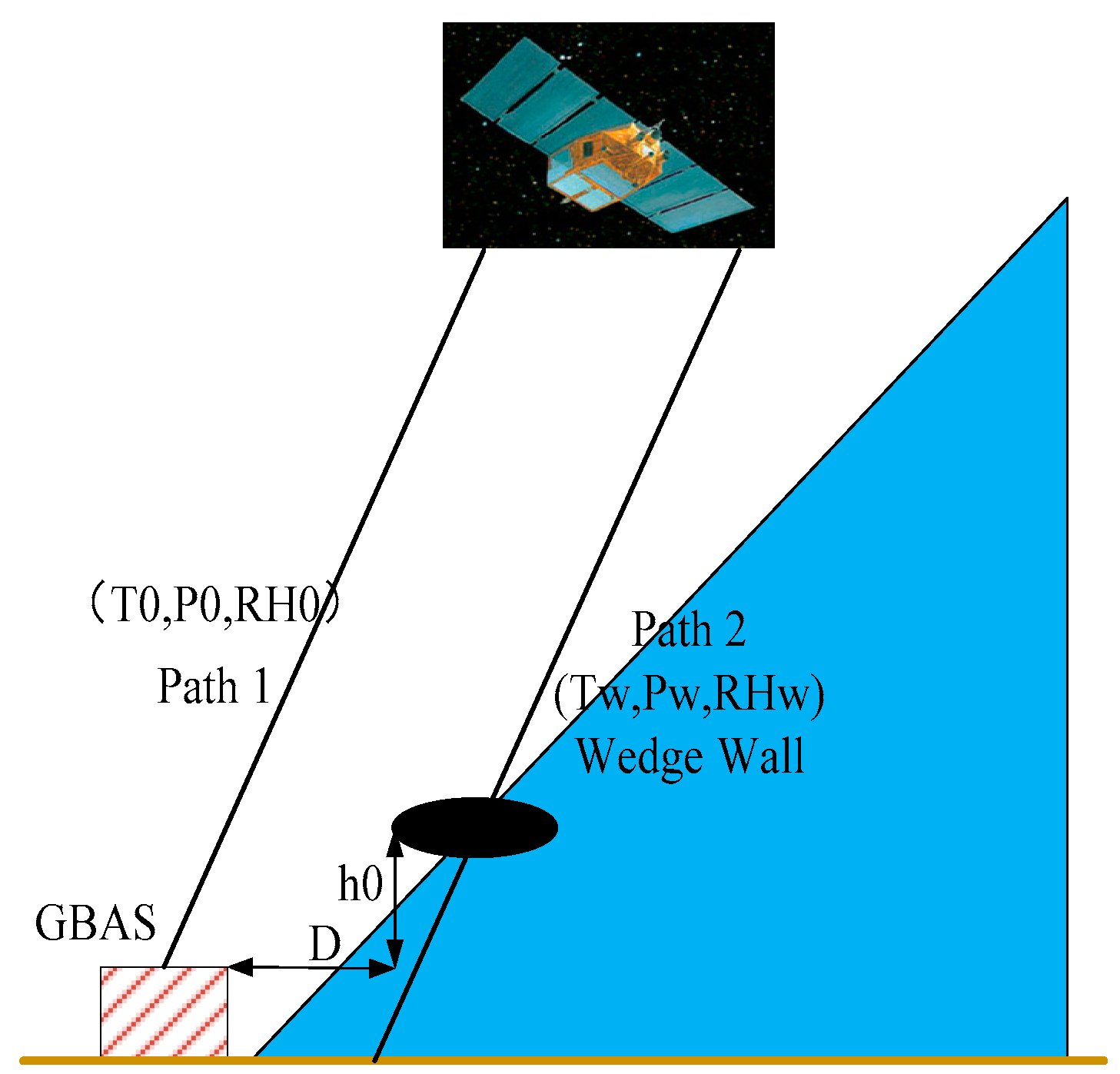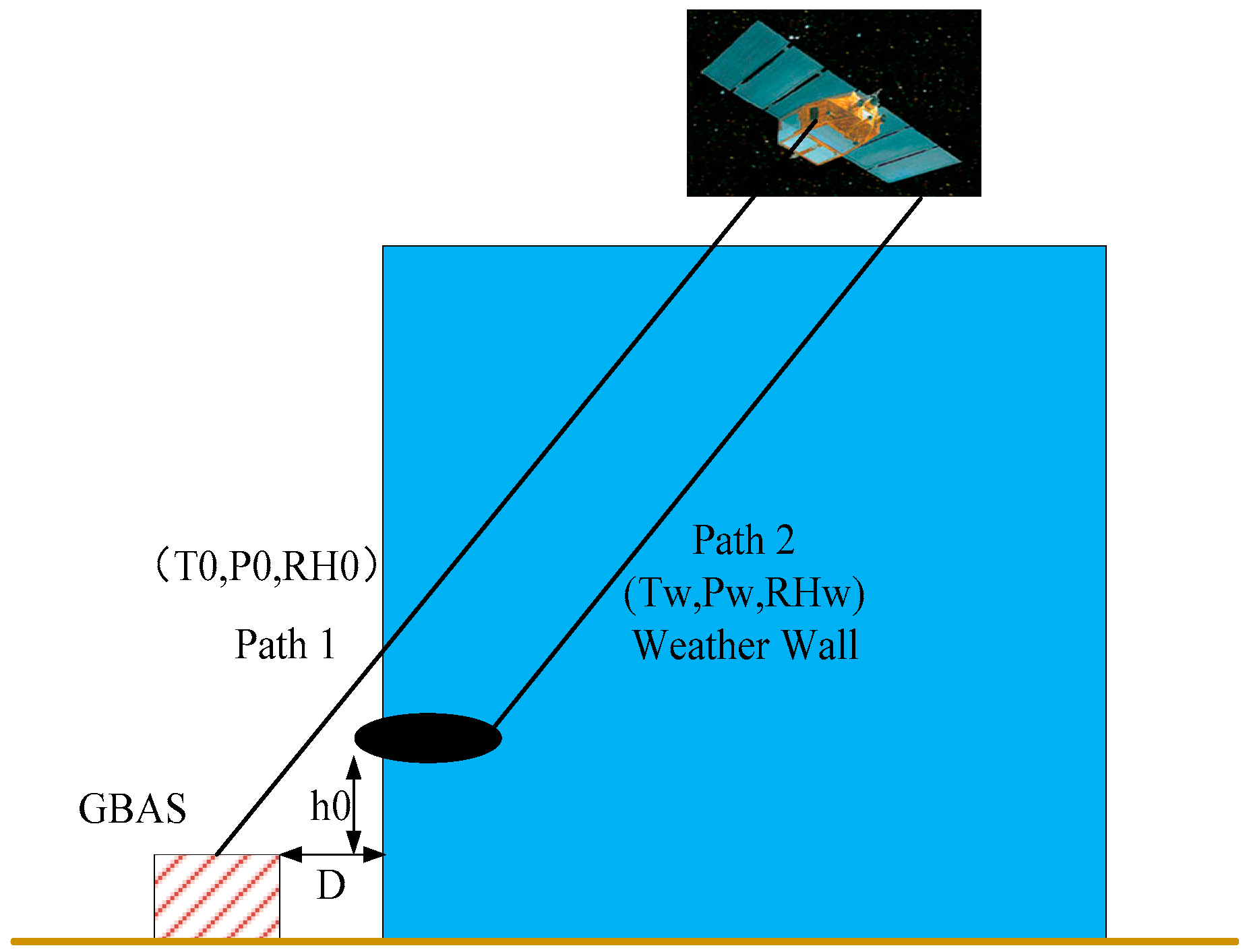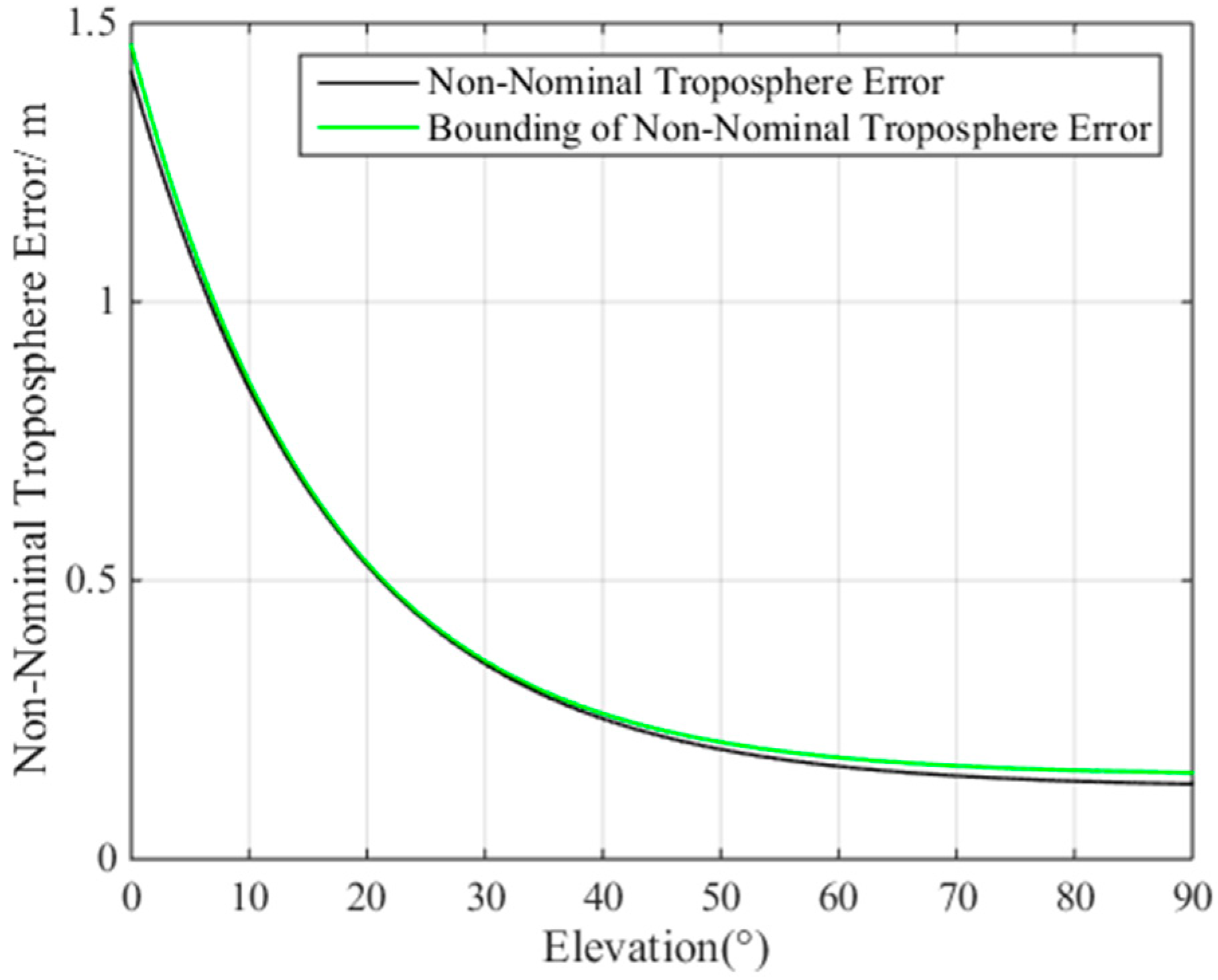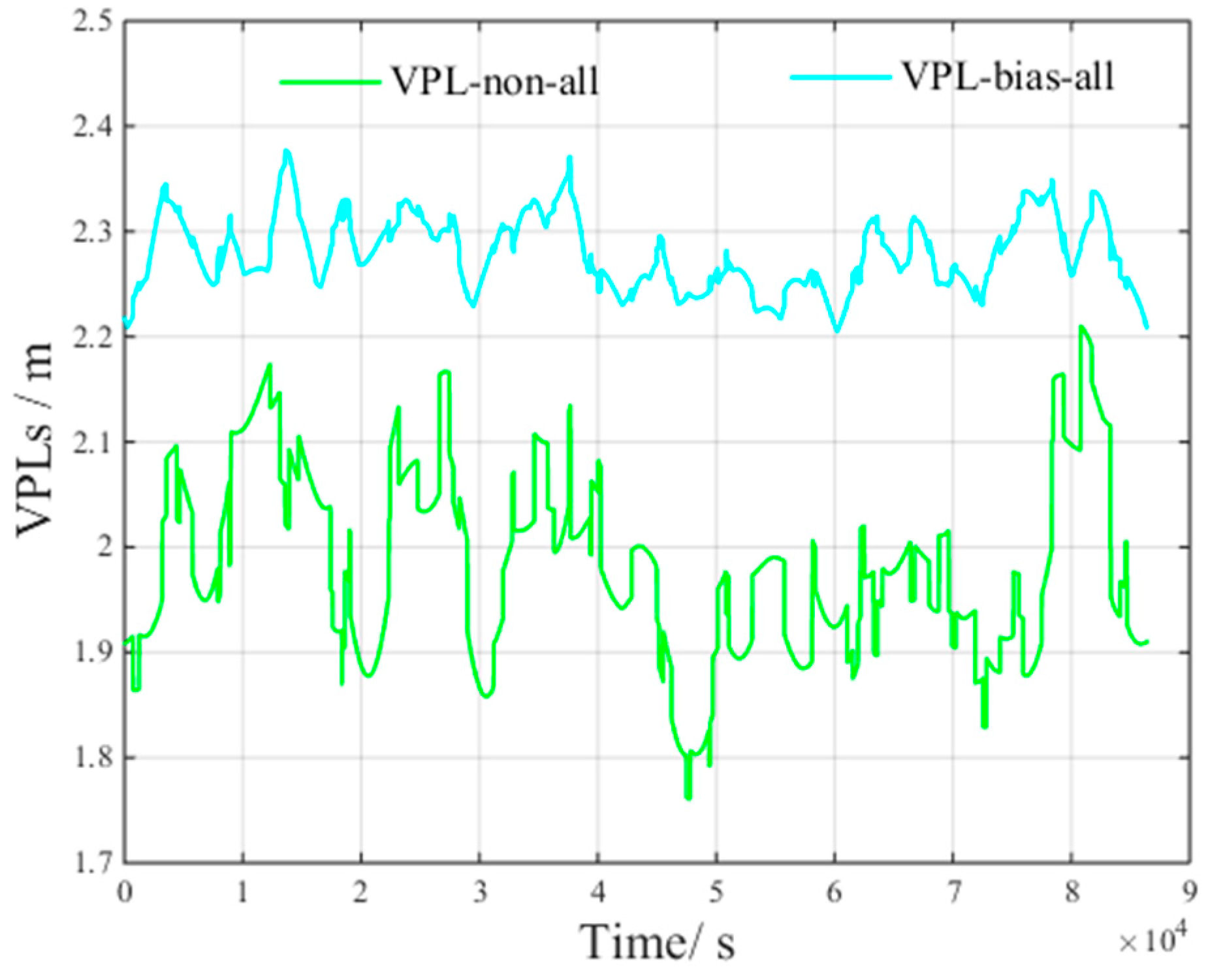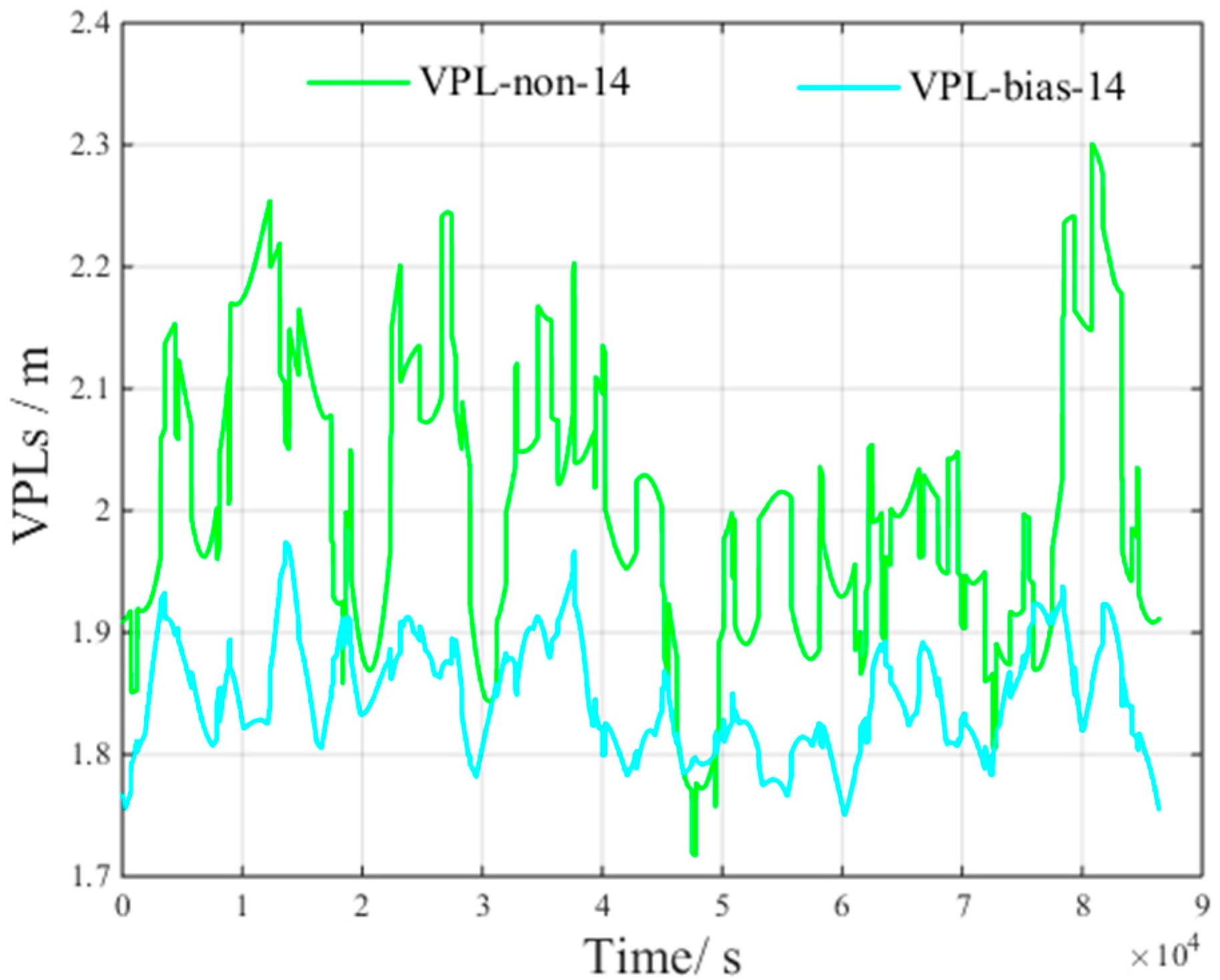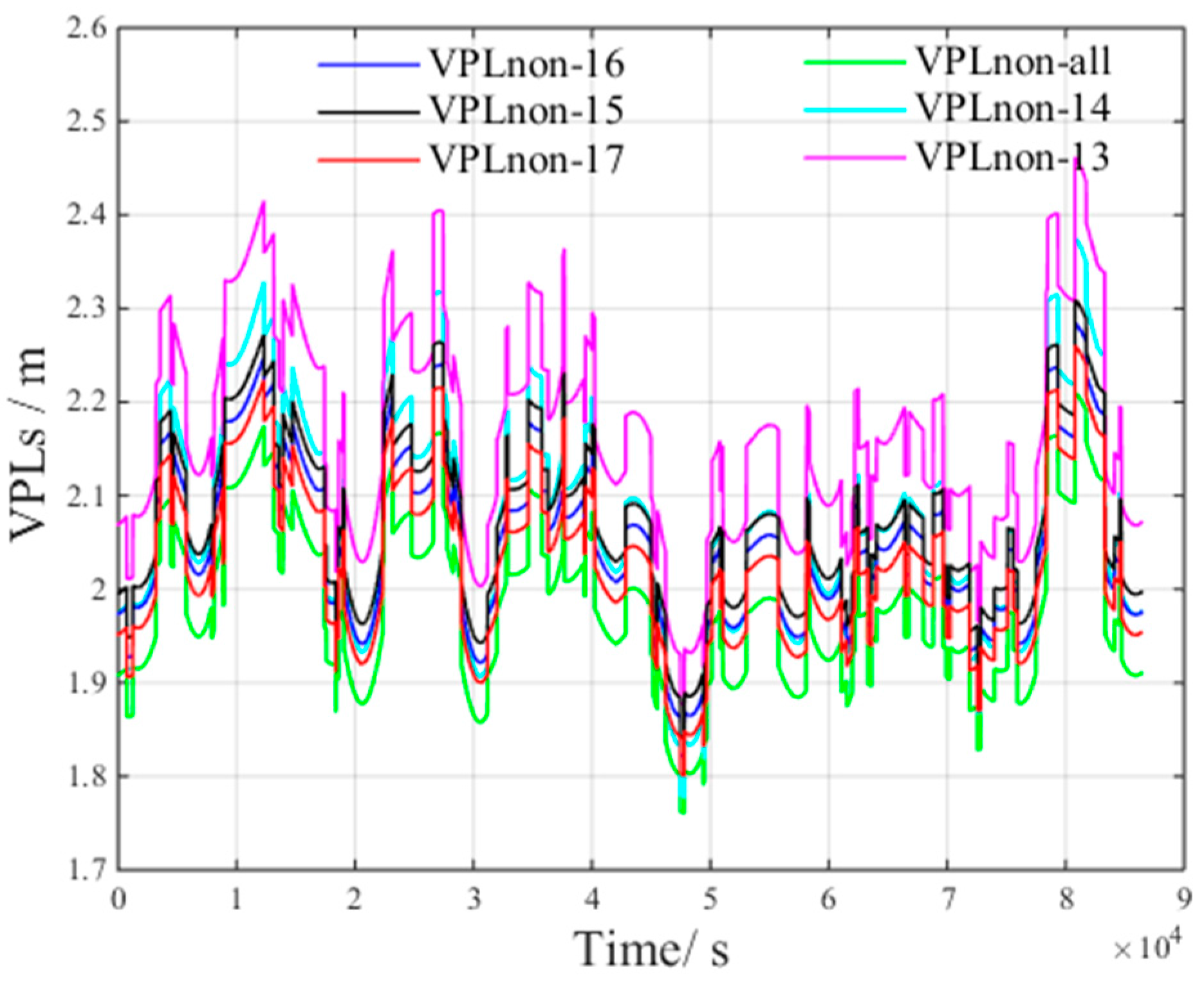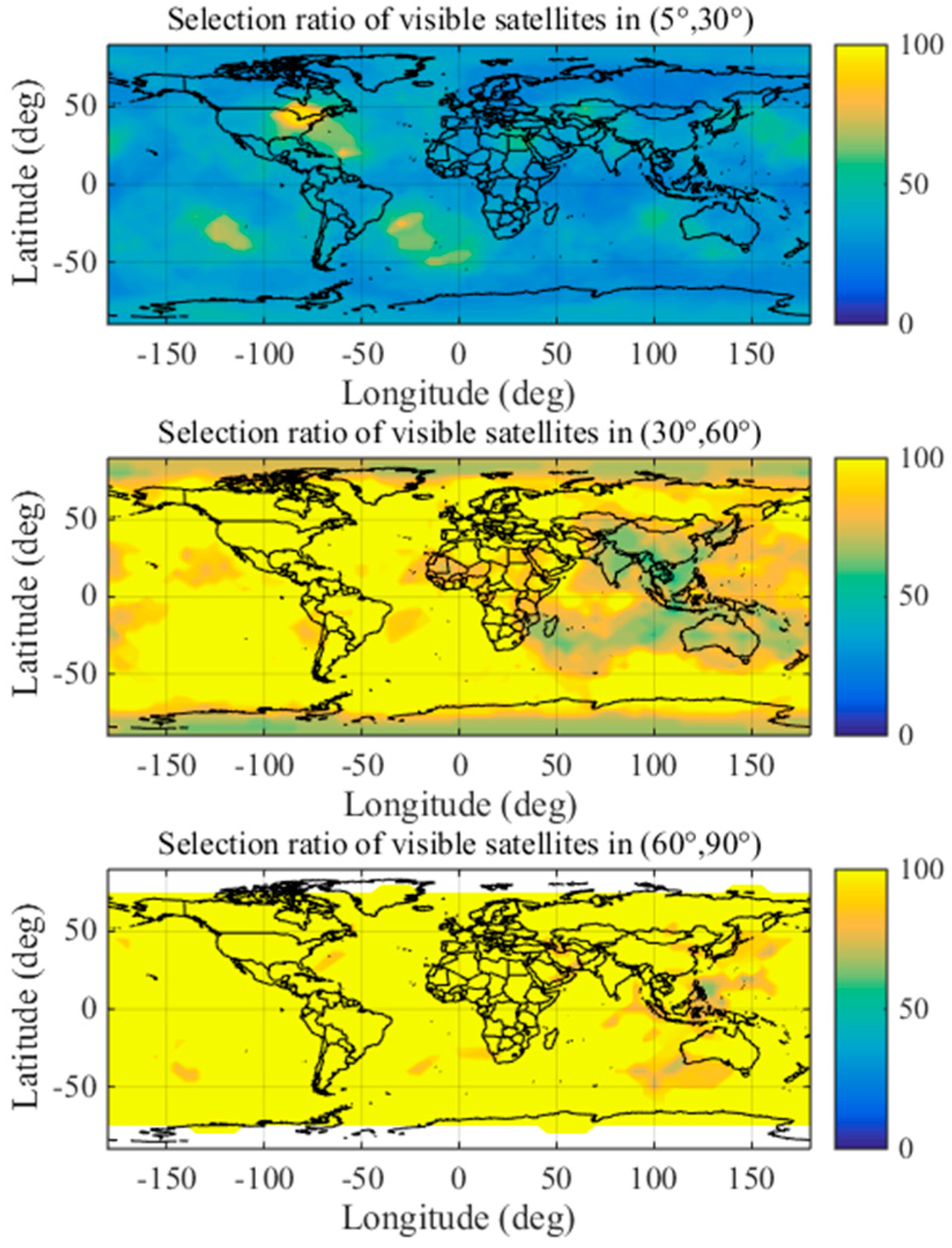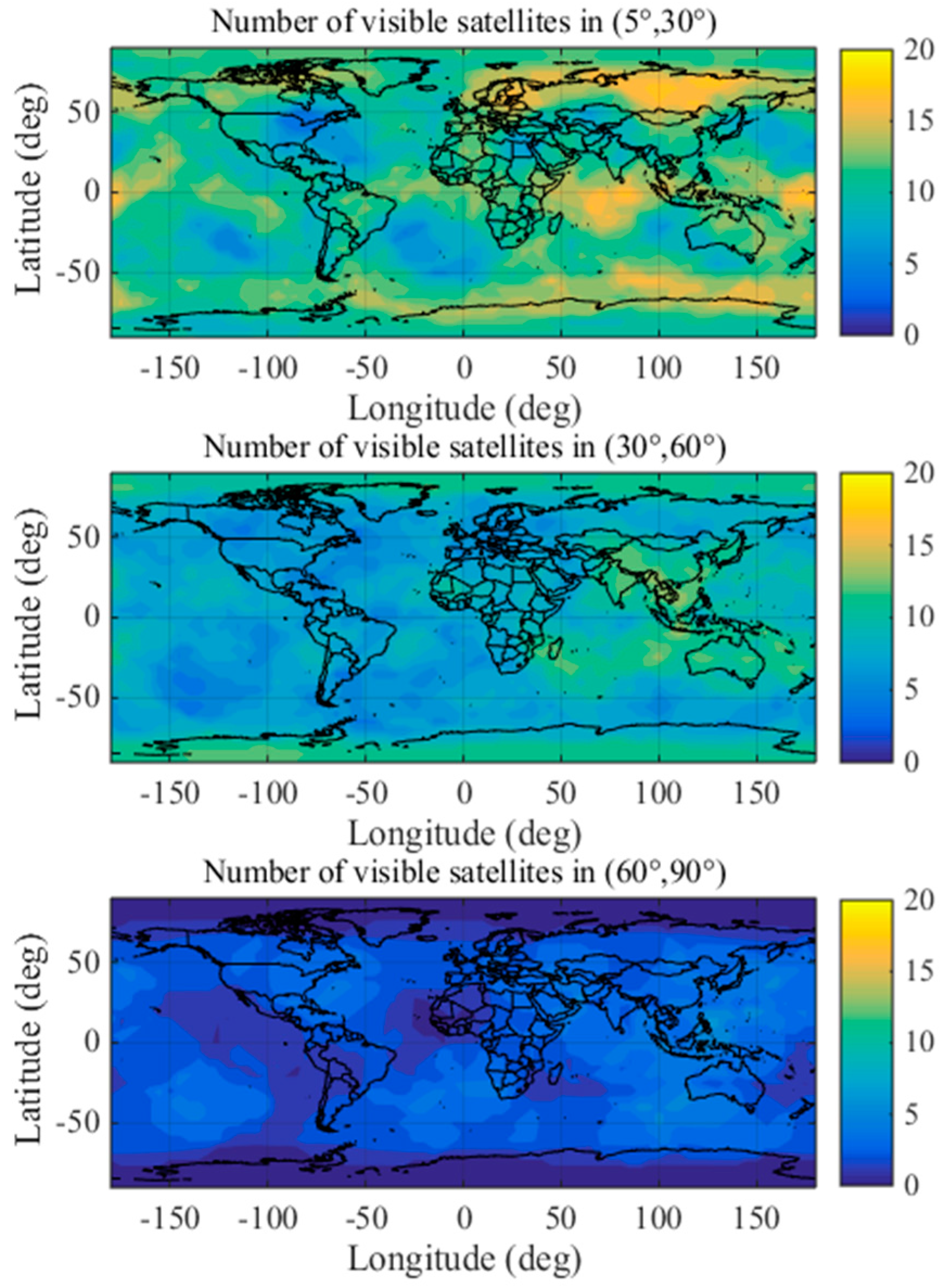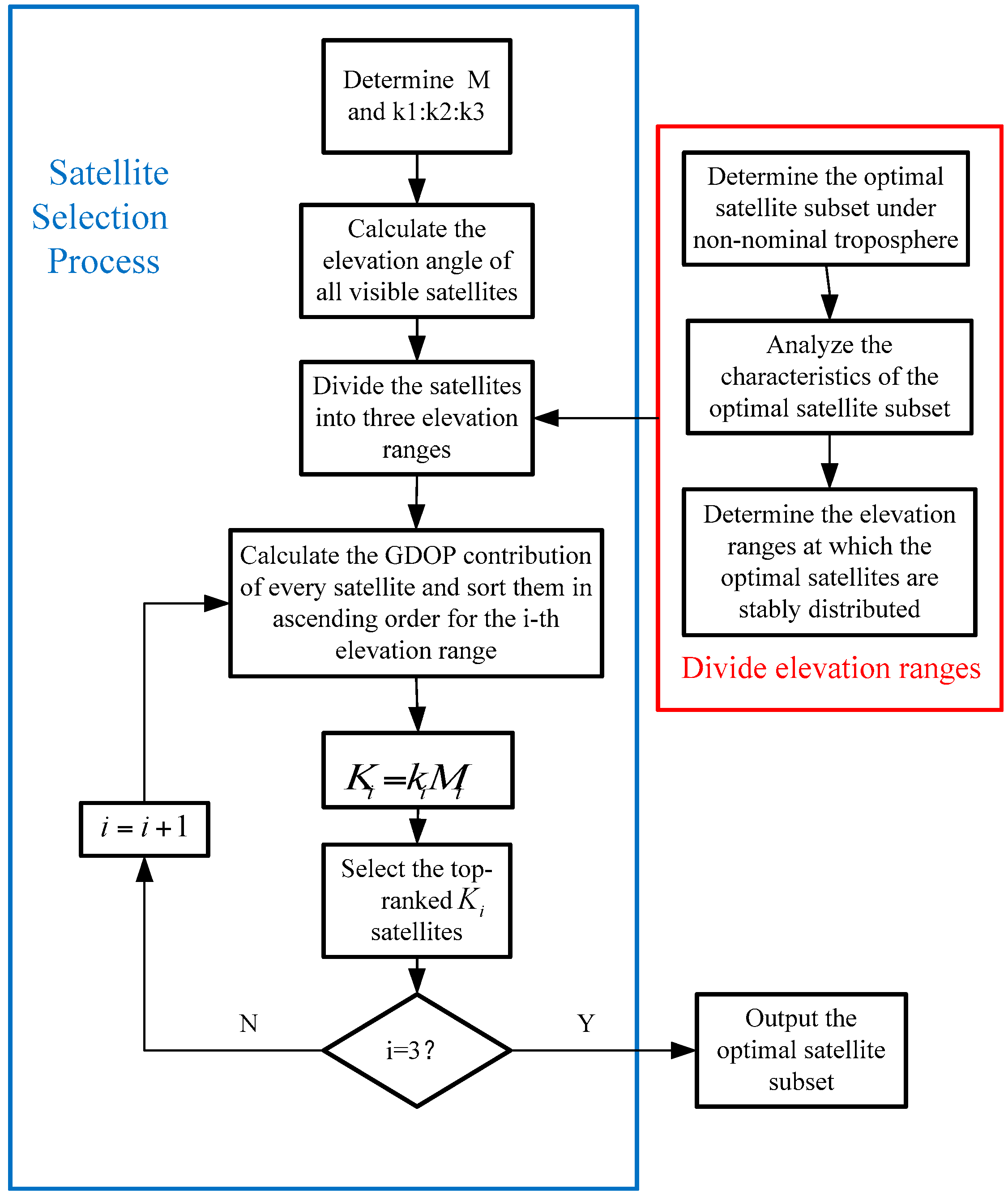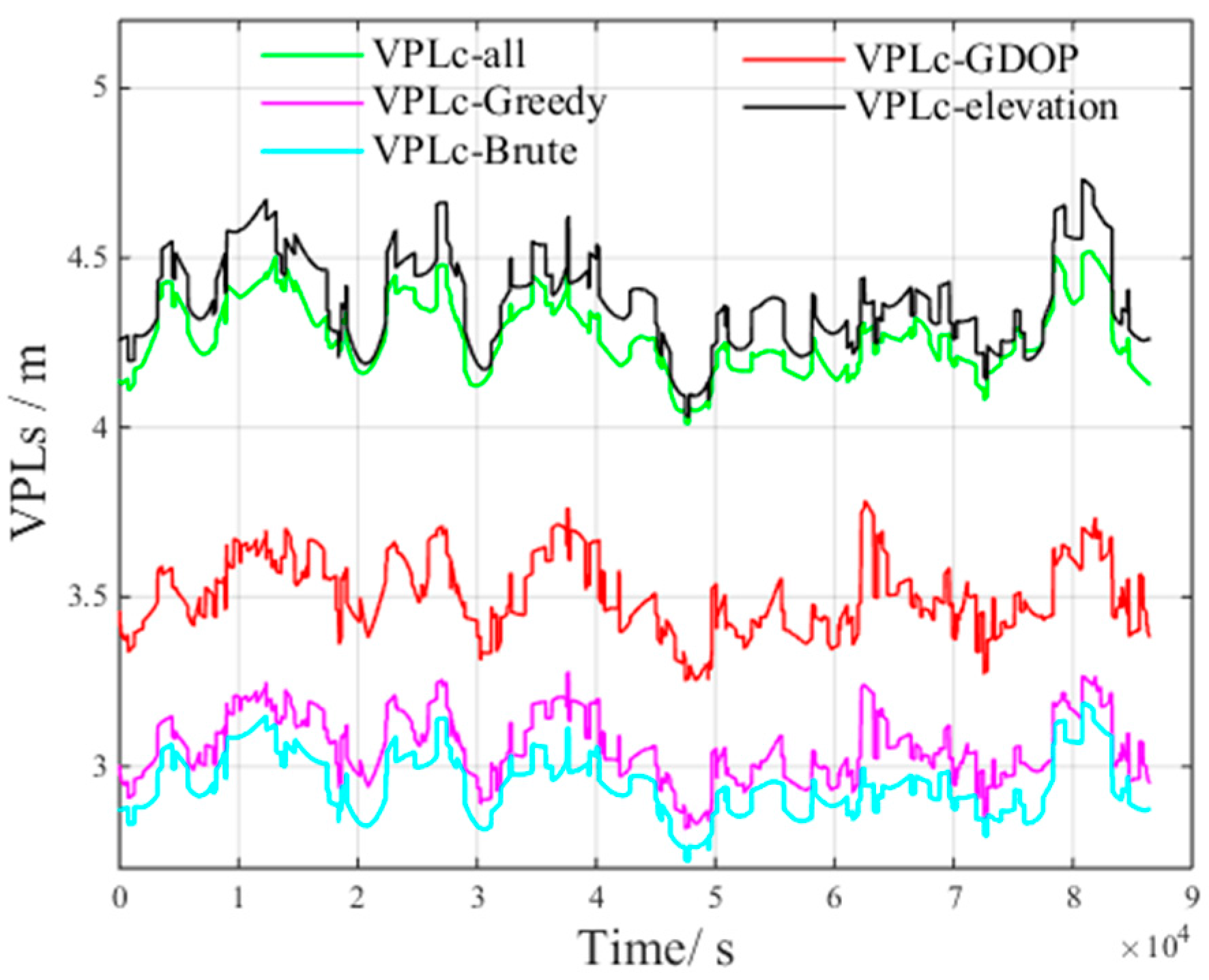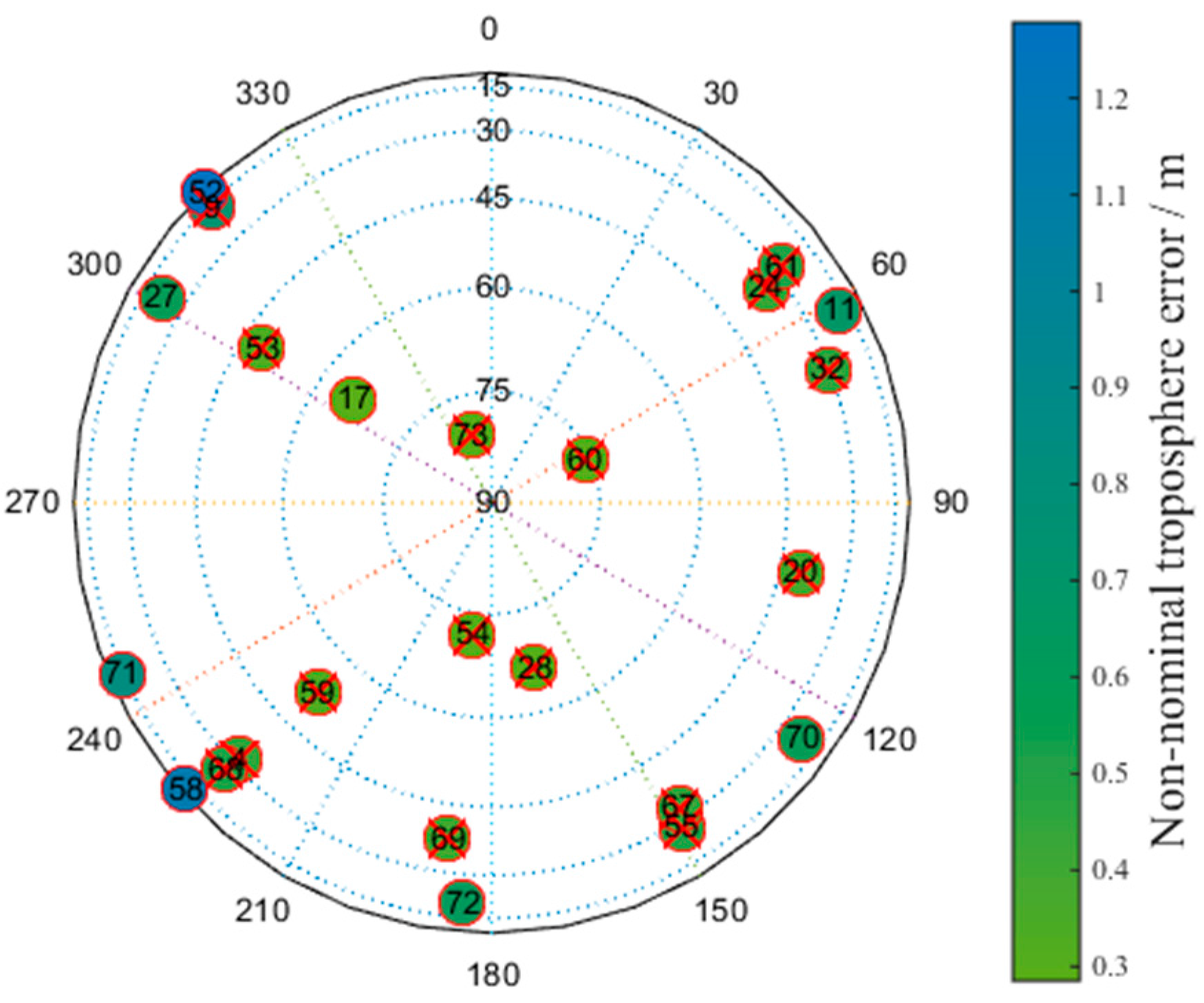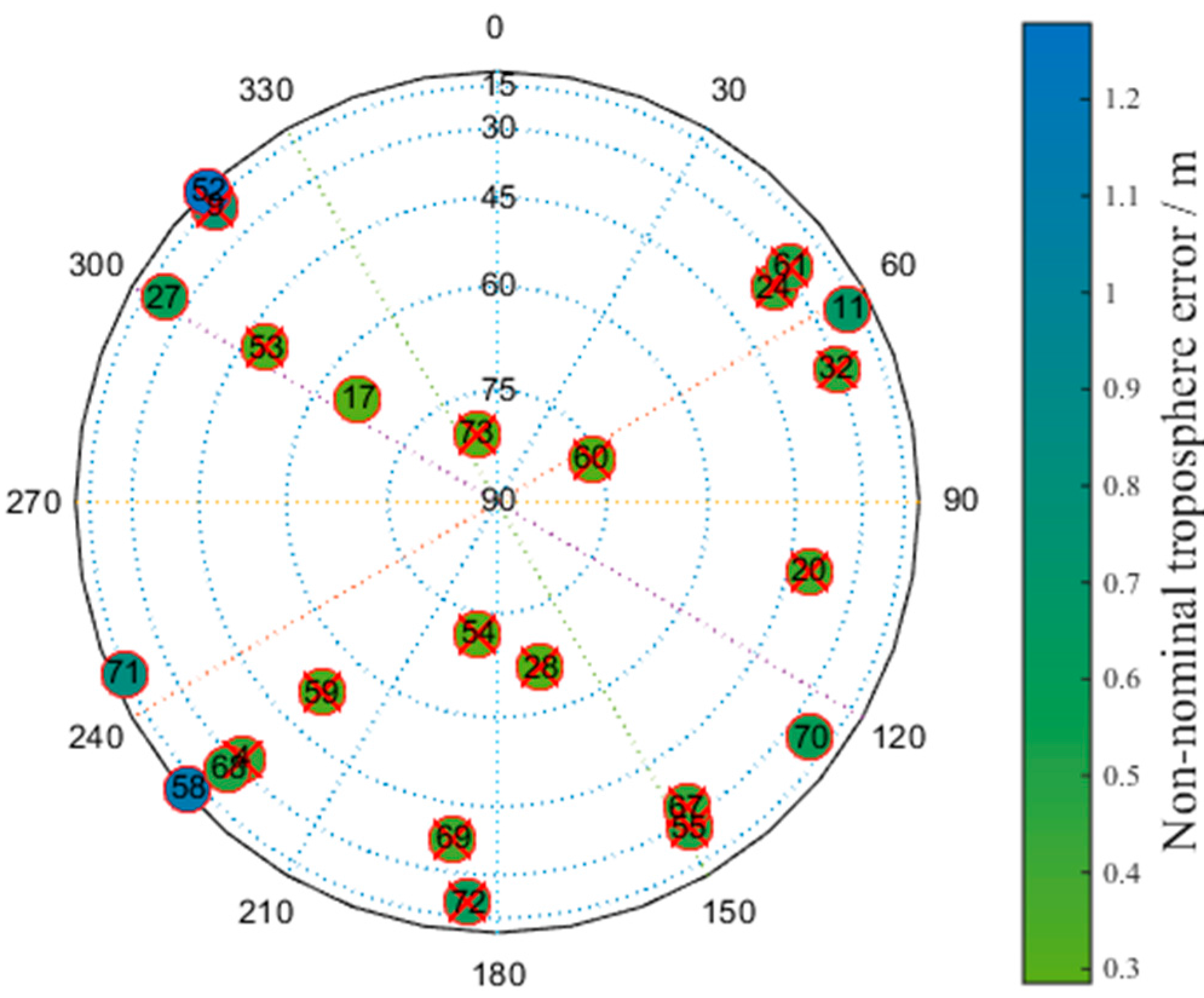Based on the above analysis, under non-nominal troposphere, once the satellite geometry is nearly optimal, the airborne VPL increases as the number of visible satellites increases. Thus, it can be inferred that satellite selection can achieve a balance between the satellite geometry and the non-nominal troposphere error. Bellow, several selection methods will be analyzed, and then a satellite selection method to reduce the non-nominal troposphere error and minimize the VPL will be proposed.
5.1. Current Satellite Selection Method
A poor selection algorithm can lead to poor satellite geometry or increase the non-nominal troposphere error. This section will describe several selection methods that may be suitable for non-nominal troposphere.
1. Elevation method:
The non-nominal troposphere error decreases with increasing elevation angle. The elevation method sorts the satellites by elevation angle and retains the k satellites with the larger values which have relatively smaller non-nominal troposphere errors. The aim of the elevation method is to minimize the non-nominal troposphere error in the satellite constellation. However, removing the lowest satellites can significantly increase the Vertical Dilution of Precision and in turn increase the VPL, thereby impacting the GBAS integrity [
7]. Therefore, the elevation method is not an optimal method for the non-nominal troposphere. The VDOP is related to the satellite geometry of the visible satellites involved in the positioning solution. The VDOP of the
m satellites is [
20]
where
is the diagonal element of the third line and the third column of
,
is the observation matrix of
m satellites. Based on the computation of the VDOP, the low elevation satellites are often quite important for good vertical geometry [
7].
2. GDOP method:
GDOP is an important evaluation factor for the satellite geometry, and a smaller GDOP indicates a better satellite geometry [
1]. In 2016, Peter F. Swaszek of the University of Rhode Island found that the satellite subset that minimizes the GDOP consists of approximately 30% low-elevation satellites and 70% high-elevation satellites [
9]. Although the GDOP method can optimize the satellite geometry and minimize the GDOP, the use of 70% low-elevation satellites will increase the non-nominal troposphere error in the constellation, resulting in a higher VPL and impacting the GBAS integrity.
3. Brute method:
The brute method examines all possible combinations of k out of N satellites to determine the best performance. The brute method can choose the optimal satellite subset which minimizes the output. In this paper, the goal is to minimize the VPL under non-nominal troposphere, and thus the criterion for satellite selection is the minimum VPL. This method is optimal in terms of returning the best possible VPL but is distinctly non-optimal in terms of its computational cost [
8].
4. Greedy method:
The greedy method is similar to the brute method [
21]. This method removes only one satellite at a time and uses the optimal satellite subset to evaluate the next iteration. The iteration process continues until the optimal subset of k satellites is selected. The selection criterion of the greedy method is also the minimum VPL.
5.2. Simulation Analysis of the Proposed Method
To improve the GBAS integrity under abnormal troposphere, this paper selects the optimal satellite subset that minimizes the airborne VPL based on the brute method for every sample epoch.
After selecting the final optimal subset, the elevation angles of the optimal satellites are calculated and the stable distribution proportions in different elevation ranges are analyzed for every sample epoch at one location.
To improve the accuracy of the statistical results and eliminate the impact of temporal factors, the distribution characteristics at all sample epochs during 2015 and 2016 are analyzed. Finally, the mean value of the distribution proportions in different elevation ranges during 2015 and 2016 are obtained.
To eliminate the influence of geographical factor and determine whether the distribution proportions of the optimal satellite subsets are applicable worldwide, this paper analyzes the distribution characteristics at different locations in detail using a 1° × 1° grid.
Thus, the distribution characteristics fully account for the temporal and geographical characteristics. The distribution characteristics of optimal satellite subsets under non-nominal troposphere are shown in detail in
Figure 14 and
Figure 15 using a 1° × 1° grid.
Figure 14 shows the stable distribution proportions of the satellites in the optimal subsets obtained by brute method in the different elevation ranges during 2015 and 2016 globally. The coloring indicates the distribution ratios (%) of the optimal satellites in different elevation ranges.
Figure 15 shows the number of visible satellites in different elevation ranges worldwide. The coloring indicates the number of visible satellites distributed in different elevation ranges.
The results shown in
Figure 14 and
Figure 15 indicate that the numbers of optimal satellite subsets are stably distributed in elevation ranges of (5°, 30°), (30°, 60°) and (60°, 90°) when the airborne VPL is minimized under the non-nominal troposphere. Based on the above analysis, the proposed method divides the satellite elevation into three categories: low elevation range (5°, 30°), mid-elevation range (30°, 60°) and high elevation range (60°, 90°).
Based on the results shown in
Figure 9, the change rates of the non-nominal troposphere error in different elevation ranges are shown in
Table 3.
The change rate of the non-nominal troposphere error is calculated as:
where
i indicates the
ith elevation range and
is the starting elevation of the
kth elevation range.
Figure 9 and
Table 3 show that, when the satellite elevation angle is within (60°, 90°), the error change rate is the smallest. The mean value of the non-nominal troposphere error is 0.21 m, indicating that the satellites with elevation angles in (60°, 90°) can contribute to reducing the non-nominal troposphere error in the constellation. In contrast, when the satellite elevation angle is in the range of (5°, 30°), the error change rate and non-nominal troposphere error are the largest. Because the satellites in the elevation range of (5°, 30°) can help improve the satellite geometry, we must find an appropriate method for selecting the optimal satellite subset to achieve a balance between satellite geometry and the non-nominal troposphere error.
Based on the above analysis, this paper proposes the following process:
Obtain the optimal satellite subsets using the brute method and the greedy method.
Analyze the distribution characteristics of the optimal satellite subsets.
Determine the number M of satellites in the optimal satellite subset based on the greedy method and then compare the results with those obtained by the brute method to verify the accuracy of the results.
Assess the satellite distribution according to the optimal satellite subsets obtained by the brute and greedy methods. Next, divide the elevation ranges into (5°, 30°), (30°, 60°) and (60°, 90°). The distribution in the three elevation ranges is k1:k2:k3.
Select the optimal satellite subset to minimize . For all visible satellites, assuming that there are M1, M2, and M3 satellites in each elevation range, k1 × M1, k2 × M2 and k3 × M3 satellites should be selected, respectively. The selection criterion is the GDOP contribution of each satellite.
The M and k1 : k2 : k3 values in the above process are determined by the following simulation analysis.
The GDOP is related to the distribution and number of visible satellites. The GDOP will vary when different satellite subsets are involved in the positioning solution. For convenience, the GDOP contribution of the
ith satellite is [
20]
where
is the observation vector of the
ith satellite. A higher value of
indicates that the satellite geometry is improved after the addition of the
ith satellite. Thus, the satellites with higher
should be prioritized.
Figure 16 presents the processing flow corresponding to the proposed method above.
5.3. Simulation Results
Figure 17 presents the
of different methods under non-nominal troposphere. The figure presents the following results:
is the of all visible satellites
is the of the brute method.
is the of the greedy method.
is the of the elevation method.
is the of the GDOP method.
Figure 18 presents the
of different methods under non-nominal troposphere. The figure presents the following results:
is the of all visible satellites.
is the of the brute method.
is the of the greedy method.
is the of the elevation method.
is the of the GDOP method.
From Inequalities (21) and (22), we can infer that all visible satellites will increase the non-nominal troposphere error, which in turn increases .
Compared with the of all visible satellites, both and increase. However, the non-nominal troposphere errors in the selected satellite subsets decrease, and as a result, and are smaller than . The above results verify the accuracy of the inference that the non-nominal troposphere error in the constellation can be reduced using an appropriate satellite selection method.
The average satellite number
M,
and
of the optimal satellite subsets obtained by different methods are summarized in
Table 4.
According to
Table 4, the
of the brute method and the greedy method increase by less than 5% compared with the VPL of all visible satellites, which meets the GBAS integrity requirements [
6]. Thus, the number of satellites in the optimal subset is set to 16.
Table 5 shows the average distribution of the optimal satellite subsets obtained by the brute method in different elevation ranges for the Linzhi airport during 2015 and 2016.
Table 6 presents the average distribution of the optimal satellite subsets obtained by the greedy method in different elevation ranges for the Linzhi airport during 2015 and 2016.
According to the results shown in
Table 5 and
Table 6, the distribution ratios of the optimal satellite subsets obtained by the brute and greedy methods in different elevation ranges are 24.6:50.3:25.1 and 25.7:49.5:24.8, respectively. For convenience, in this paper, the ratio is set to 1:2:1. Given that the number of satellites in the optimal subset is 16, it is necessary to select four, eight and four satellites in the elevation ranges of (5°, 30°), (30°, 60°) and (60°, 90°), respectively.
Based on the current GPS constellation and the global BDS constellation, the numbers of satellites in different elevation ranges are shown in
Table 7 for the case in which the number of visible satellites at the Linzhi airport is minimized.
Table 7 shows that the requirements of satellite selection can be met when the number of visible satellites at the Linzhi airport is minimized.
Figure 19 presents a skyplot of the optimal satellite subset obtained by the brute method corresponding to the epoch in which the number of visible satellites at the Linzhi airport is minimized. The satellites marked with red crosses are the selected satellites. The numbers in the circles correspond to the satellites’ numbers; the values 1–40 correspond to GPS, and 40–75 correspond to BDS. The colors represent the non-nominal troposphere error for every satellite, and red crosses indicate that the corresponding satellites are selected.
Figure 20 shows a skyplot for the optimal satellite subset obtained by the greedy method corresponding to the epoch in which the number of visible satellites at the Linzhi airport is minimized. The colors represent the non-nominal troposphere error for every satellite, and red crosses indicate that the corresponding satellites are selected.
Table 8 presents the satellites that were removed from the optimal satellite subset by the greedy and brute methods.
According to
Table 8, the optimal satellite subset selected by the greedy method exchanges satellite No. 55 with satellite No. 70 compared with the subset obtained by the brute method. The other satellites in the optimal subsets are all the same. Satellites No. 55 and No. 70 have approximately equal non-nominal troposphere errors, confirming the effectiveness of determining the distribution of optimal satellite subsets based on the brute and greedy methods.
Figure 21 shows a skyplot of the optimal satellite subset obtained by the proposed method corresponding to the epoch in which the number of visible satellites at the Linzhi airport is minimized. The colors represent the non-nominal troposphere error for every satellite, and red crosses indicate that the corresponding satellites are selected.
Figure 21 shows that the optimal satellite subset selected by the new method exchanges satellite No. 68 with satellite No. 72 compared with the subset obtained by the brute method. The non-nominal troposphere error of satellite No. 68 is smaller than that of satellite No. 72. The other satellites are all the same. This slight difference indicates that the geometry of the satellite subset obtained by the new method is as good as the satellite subset obtained by the brute method.
Figure 22 presents the
of the new method under non-nominal troposphere, with the following results.
From
Figure 22, we can derive the following inequality:
By examining Inequality (23), it is clear that decreases compared to , and .
Figure 23 presents the
of the new method under non-nominal troposphere, with the following results.
From
Figure 23, we can derive the following inequality:
By examining Inequality (24), it is clear that decreases compared to and .
The average
,
and
for the optimal satellite subsets obtained by the new method are shown in
Table 9.
Table 9 reveals that compared to all visible satellites, with the new method the average
increase is 1.15 m, which corresponds to a decrease of 50.4%, and the average
increase of the new method is 0.12 m, which corresponds to an increase of 6%. These results show that the proposed method can reduce the non-nominal troposphere error in the satellite subset. Although
increases by 0.26 m compared to
, the running rate is greatly improved.
Professor Todd Walter of Stanford University suggested that the running rate of different methods can be characterized by the program running time (the duration from the start to the end of the program) [
7].
Based on the Matlab function combntns, the program traverses all possible satellite subsets and records the running time of different methods.
Table 10 shows the running time of different methods obtained on the same day.
Table 11 presents the percentage improvement in the running rate of the new method compared to those of other methods.
As seen in
Table 10 and
Table 11, the running rate is greatly improved compared to those of the brute method and the greedy method.
According to the above analysis, it can be concluded that the new method proposed in this paper can achieve a balance between the satellite geometry and the non-nominal troposphere error, which greatly decreases non-nominal troposphere error in the positioning solution. The new method not only minimizes the airborne VPL under severe troposphere conditions but also improves both the GBAS integrity and running rate.

